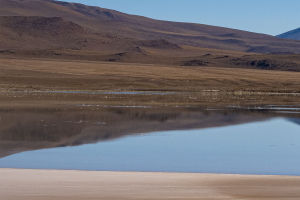The quality of river water is greatly influenced by the surface landscape of the watershed, making it an important component of the environment. Although point source pollution is now effectively controlled in many places, non-point source pollution has become a significant issue affecting river water quality.
The change of surface landscape in the watershed can also affect the ecological function of the area and the type of pollutants discharged into the river, which is the leading factor affecting the safety of river water quality.
The landscape spatial pattern, which includes the composition and spatial configuration of landscape elements, is a crucial factor to explore the correlation between surface landscape and river water quality from the perspective of landscape ecology.
This exploration mainly involves the use of landscape composition area percentage and landscape pattern index as indicators to analyze the relationship between surface landscape and river water pollutant concentration index.
In recent years, more and more research has been conducted to establish a quantitative relationship between landscape index and the water quality of river basins. Scholars at home and abroad have studied the correlation between landscape and water quality at different spatial scales, mainly from catchment, sub-watershed, buffer zone, and other scales to study the correlation between the two and the scale effect and distance effect.
These studies have involved calculating landscape pattern index by landscape analysis methods and selecting suitable landscape pattern characteristics.
Landscape plays an important role in the redistribution of natural resources such as light, heat, water, and wind on the surface of the earth, which in turn constrains the spatial differences of natural conditions such as climate, soil, and biology in a certain area.
The influence of landscape on river water quality varies among different landscapes. For example, in plain watersheds, compared to mountainous watersheds, dissolved oxygen values are lower, but water temperature, conductivity, permanganate, total phosphorus, total nitrogen, ammonia nitrogen, nitrate nitrogen, and chlorophyll values are higher.
Studies have shown that in mountainous watersheds, the patch density of farmland, orchard, and grassland is related to river water quality, while in plain watersheds, river water quality is related to the maximum patch index of urban land.
The upper and middle reaches of the Chishui River basin are typical karst landscapes, which are crisscrossed by high mountains and valleys, with fragmented features and large surface undulations; the lower reaches are non-karst landscapes, which have a wide distribution of gentle slopes and low hills, with small surface undulations.
The water quality in the upper reaches of the river basin is good above Maotai town, but the rest of the river is poor. The water quality in the section of the Chishui River into the Yangtze River, Sewing Fish Creek, has exceeded Class III standards, and the main pollution factor is ammonia nitrogen.
Research on the difference of surface landscape characteristics on river water quality in different geomorphic areas is relatively rare at home and abroad.
Using the Chishui River basin as a study area, this research employed the Spearman rank correlation analysis and redundancy analysis to investigate the difference of surface landscape on river water quality in different geomorphic conditions and spatial scales, and to provide a reference for water pollution control and management in the Chishui River basin.


